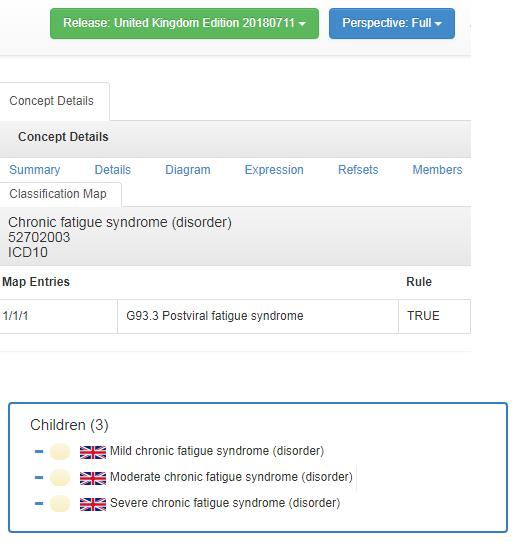Dx Revision Watch
Senior Member (Voting Rights)
Action for M.E.
https://www.actionforme.org.uk/news/gp-system-updated-to-reflect-m.e.-as-neurological/
GP system updated to reflect M.E. as neurological
-----------
NB: Just to clarify my position: I did not consider the Multisystem disorder parent Concept (which was retired from all 90 Children in January 2018) to be particularly unhelpful, per se.
But that being left with
Clinical finding (finding)
> Disease (disorder)
and no body system/aetiology parent was undesirable.
If ICD-11 had progressed with its early discussions for a potential new chapter for Multisystem diseases, or for a Multisystem disorders linearization, it is possible that ME, CFS would have been a candidate for inclusion within that chapter or linearization [1][2].
1 Aymé, Chalmers, Chute, Jakob (2010). ICD Revision: Discussion paper: Multisystem Disorders. http://bit.ly/2nnilKW
PDF: https://dxrevisionwatch.files.wordp...-multisystem-diseases-discussion-document.pdf
2 WHO ICD Revision Information Note 19: Multisystem Diseases Chapter in ICD, January 29, 2013
Edited to add: Action for M.E. has amended its report.
https://www.actionforme.org.uk/news/gp-system-updated-to-reflect-m.e.-as-neurological/
GP system updated to reflect M.E. as neurological
-----------
NB: Just to clarify my position: I did not consider the Multisystem disorder parent Concept (which was retired from all 90 Children in January 2018) to be particularly unhelpful, per se.
But that being left with
Clinical finding (finding)
> Disease (disorder)
and no body system/aetiology parent was undesirable.
If ICD-11 had progressed with its early discussions for a potential new chapter for Multisystem diseases, or for a Multisystem disorders linearization, it is possible that ME, CFS would have been a candidate for inclusion within that chapter or linearization [1][2].
1 Aymé, Chalmers, Chute, Jakob (2010). ICD Revision: Discussion paper: Multisystem Disorders. http://bit.ly/2nnilKW
PDF: https://dxrevisionwatch.files.wordp...-multisystem-diseases-discussion-document.pdf
2 WHO ICD Revision Information Note 19: Multisystem Diseases Chapter in ICD, January 29, 2013
Edited to add: Action for M.E. has amended its report.
Last edited:



